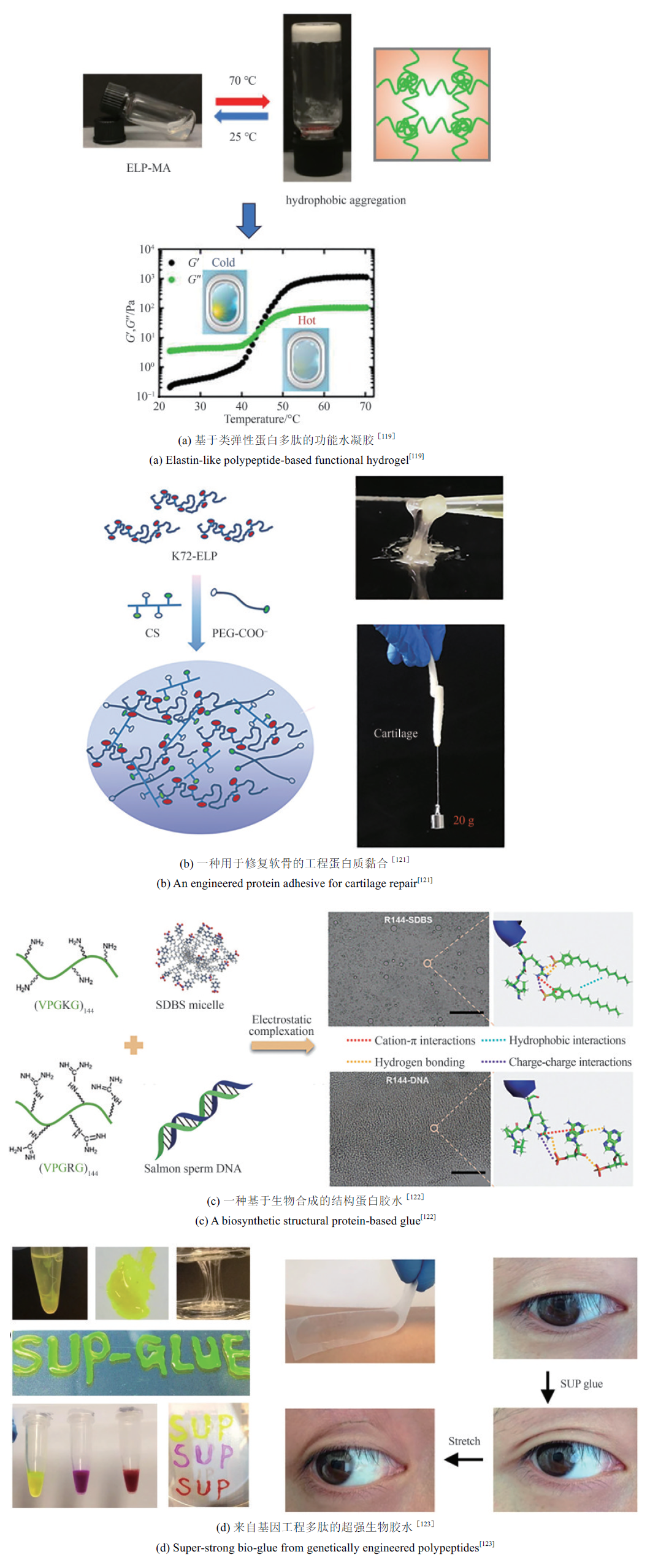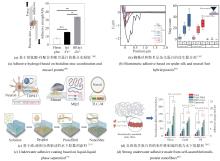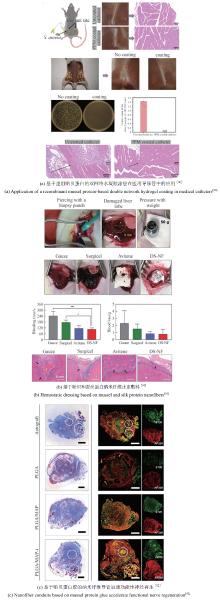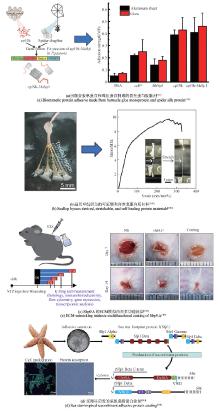|
||
|
Synthetic biology and applications of high-adhesion protein materials
Synthetic Biology Journal
2025, 6 (4):
806-828.
DOI: 10.12211/2096-8280.2025-043
Due to their exceptional bioadhesive properties and potential biocompatibility, high-viscosity protein materials exhibit significant application prospects in the fields of biomedical materials and adhesives. However, traditionally sourced high-viscosity protein materials encounter numerous challenges, including low yields, structural complexity, and difficulties in scaling up production. Synthetic biology, as an emerging interdisciplinary field, offers innovative strategies to address these bottlenecks. This review systematically summarizes recent advances in the biosynthesis, modification, and applications of high-viscosity protein materials, focusing on the advantages of synthetic biology in addressing issues related to the yield, controllability, and functional diversity of these materials. The precise design and efficient expression of adhesive proteins, such as mussel adhesive proteins, barnacle cement proteins, and scallop foot proteins, achieved through genetic engineering, are comprehensively reviewed, demonstrating the overcoming of limitations in the production and controllability of high-viscosity protein materials. Furthermore, the unique advantages of these protein materials in bioadhesives and functional medical coatings, such as the wet adhesion of mussel proteins, the strong adhesion of barnacle cement proteins, and the tunable properties of elastin-like proteins, are summarized. By employing synthetic biology approaches, limitations in the yield, performance, and functionality of high-viscosity protein materials can be overcome, thereby accelerating their application in areas such as tissue engineering and surface modification. Finally, the latest advancements and innovations in the field of synthetic biology for high-viscosity protein materials are summarized, and future development directions are envisioned, offering new ideas and strategies for the development of high-performance, multifunctional high-viscosity protein materials.

Fig. 5
Applications of ELPs in highly viscous materials
Extracts from the Article
ELP被广泛用作再生医学、组织工程和药物递送的仿生材料,是开发纳米生物技术工具包的重要组成部分。例如,清华大学深圳国际研究生院弥胜利教授团队[119]设计并合成了一种基于基因工程化富含赖氨酸的类弹性蛋白多肽,并通过化学方法用甲基丙烯酸基团对赖氨酸位点进行共价修饰。通过实验和模拟相结合的方法验证了结构转变的预测。通过控制甲基丙烯酸酯化程度和ELP-MA浓度,可以调控水凝胶的物理性质,如机械强度、孔径和溶胀率。体内实验表明,ELP-MA水凝胶具有良好的生物相容,可作为光透射调节器和弹性黏合剂,在组织工程等生物医学领域具有潜在的应用价值[图5(a)]。
此外,刘凯团队[120]通过将ELP与其他分子复合,从而形成强内聚性交联分子网络,发展了一系列多功能的蛋白基黏合材料。例如,他们开发了一种由软骨素(CS)与带正电荷的类弹性蛋白(ELP72)静电结合而成的新型蛋白黏合剂。在软骨缺损大鼠模型中,该蛋白黏合剂表现出良好的治疗效果,有望在软骨修复领域实现转化应用[121][图5(b)]。该团队还通过基因工程,将精氨酸(R)或赖氨酸(K)编码到ELP中,生成高阳离子性蛋白质。通过静电作用,将这些蛋白质与鲑鱼精子DNA或十二烷基苯磺酸钠(SDBS)结合,形成基于凝聚层的胶黏剂,即R-DNA和R-SDBS。其中,R144-DNA胶黏剂在多种材料表面展现出卓越的黏附强度和能量,超越了现有蛋白质胶黏剂。此外,该胶黏剂还具备快速止血、促进组织再生、抑制炎症和抗菌等特性,使其在伤口修复和组织工程领域具有广阔的应用前景[122][图5(c)]。另外,通过将超正电荷类弹性蛋白与表面活性剂分子进行静电络合,形成了复杂凝聚态胶水SUP-SDBS。SUP-SDBS在多种底材(玻璃、金属、PVC或PE)上的黏附性能与商用氰基丙烯酸酯胶相当,同时表现出促进止血和加速愈合的作用[123][图5(d)]。
Other Images/Table from this Article
|




